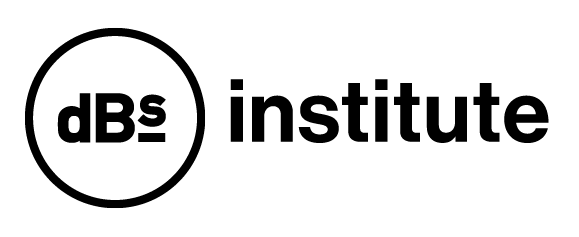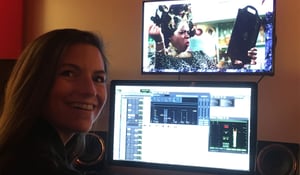As you already know, dBs Institute prides itself on working alongside industry professionals and giving our students access to the very best advice and expertise in the business. We had the pleasure of meeting Ruth from We Are Audio where she also shared her pro tips on designing sound for screens....
1. Identify The “Feel” Of The Project
- Every project has a mood. Try to get inside the mind of the director or editor, work out what emotional response they want from their audience and do your best to enhance it.
- Can you use sound to add to the visual storyline? Use your sound design to inform the viewer what’s going on behind the camera, try to bring the environment around the characters to life.
- Try to build a sound world that enhances the story. This sometimes means creating your own atmosphere beds with tones rather than real environmental sounds.
2. Work Fast And Instinctively At The Beginning
- This is the fun bit! Your first impressions of a piece are often what inspires you to create. Use this moment of fresh inspiration to start throwing ideas into the sound bed. Let yourself go wild, any idea is a good idea at this stage. You’re aiming to create a sound palate that you can take your time to refine and “weed out” later. (See Step 5)
- Work with “real” sounds layered with synthetic effects. Generally each effect will need to be made up of several layers, each adding a certain blend of frequencies or character. Having a real element, i.e. something recognisably belonging to the picture, helps bed the sound into the piece. Even if a sound effect could in theory be made up of entirety synthetic elements, (such as in a Sci-fi film for example), it often helps to take a real world sound and manipulate it to create a whole piece of audio.
- For Example: You could take a gunshot sound and slow it down, reverse it, pitch it up or down, and run it through a chain of plugins to create a sound layer for a Sci-fi blaster. Add a Moog sub bass synth pulse and an electricity zap to your manipulated gunshot and suddenly you’ve made an entirely new and unique sound for that weapon, but it still has something that we recognise within it.
3. Begin With Everything In
- When beginning to add your sound design, work with all of the elements that you have bee supplied turned up and “in the mix”. (Music, Dialogue, Voice Over). That way you can quickly tell if what you’re adding will work against the other audio elements in the project.
- For example: There’s no point building a epic sound design bed, or a multi layered explosion that
sounds incredible on its own if there’s a voice over happening at the same time. - Does it work with the music? If your lovely tonal sound bed or sound effect isn’t in tune with the key of the music its going to clash feel really horrible.
![Top 5 sound design tips from We Are Audios Ruth Rainey [Featured Image]](https://insider.dbsinstitute.ac.uk/hs-fs/hubfs/Top%205%20sound%20design%20tips%20from%20We%20Are%20Audios%20Ruth%20Rainey%20%5BFeatured%20Image%5D.jpg?width=1200&height=700&name=Top%205%20sound%20design%20tips%20from%20We%20Are%20Audios%20Ruth%20Rainey%20%5BFeatured%20Image%5D.jpg)
4. Make Space and impact
- Sometimes silence is the most powerful tool, a cut or mute before a powerful impact can be very effective. Balance is everything. A few dB can make all the difference. And if you can’t make the balance work with volume rides, its usually because the piece is to full, or the frequency balance is to clouded. You may need to start Eq’ing to make space for everything to fit nicely together.
- You have to be brutal! Even if you’re in love with a sound you’ve made, be brave and if its
clouding the picture, thin it out (remove some layers), or take it out all together. I call this process
“weeding out”. You’ll find that the project starts to feel more open, clarity and space will appear in
the mix that allows the most important elements to pop through. - Think about timing your sound effects to the beat of the music, this can be a really effective way
of adding power to a piece without filling in all the space. Abruptly cutting the tail of an explosion to
the downbeat of the next musical bar can sound really cool for example.
5. Put Your Own Stamp On It
- Give yourself time to experiment, sometimes it can take a few tries to work out the best thing to
do. If you feel inspired to try something unexpected, be prepared to work at it, but also allow
yourself to let it go if it doesn’t work. - If you spend ages making a super cool new sound, but it doesn’t gel with the current project,
save the sound, bounce it down and stick it in your own library. This way you’ll start to create
your own library that helps you sound unique. - And lastly, even if you think you’ve created a masterpiece, be prepared for the dreaded “client notes”. You’ll need to be thick skinned, the client may not always like what you’ve done. Be open minded and work with them to bring their vision to life.
www.weareaudio.com



